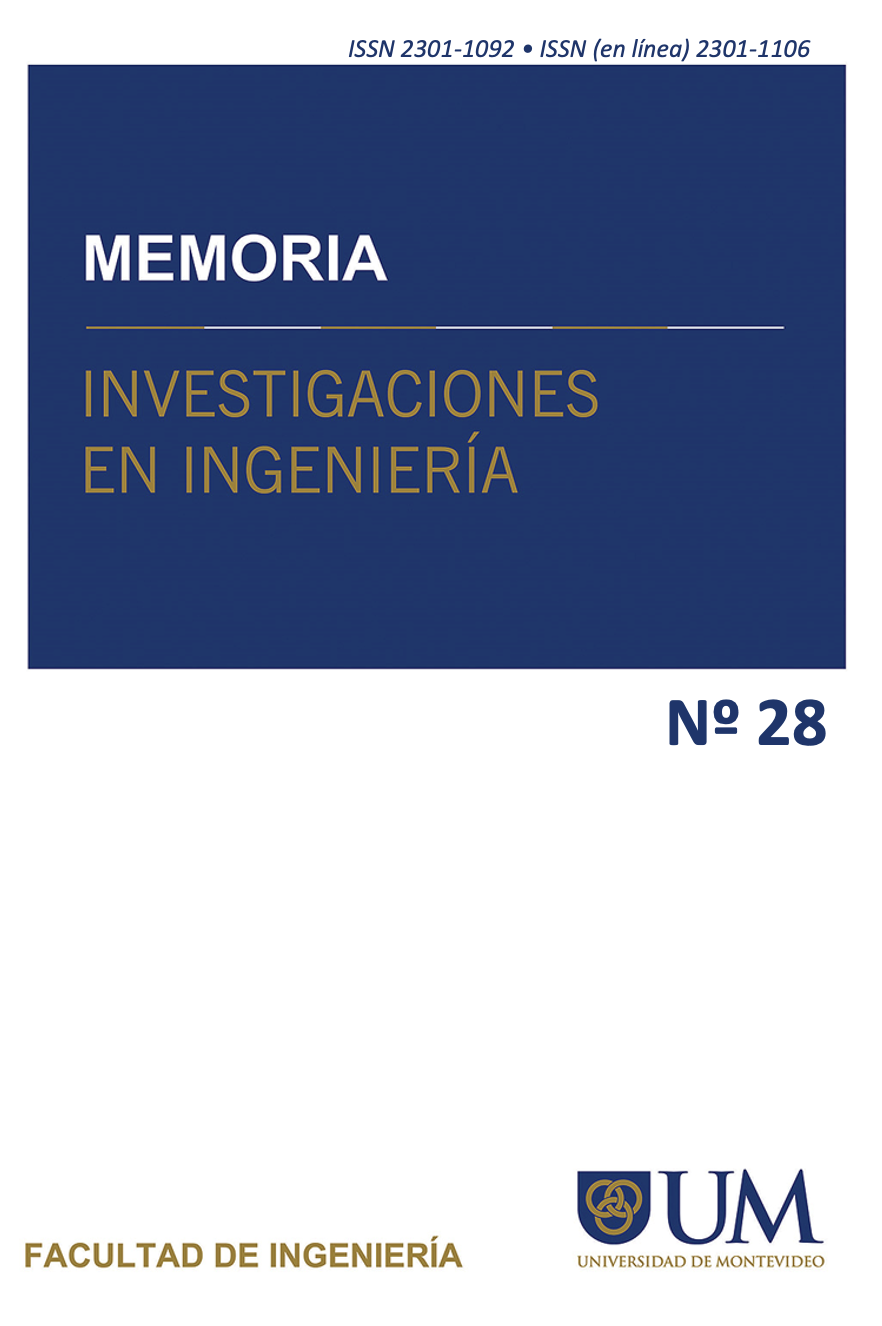Soil-Structure interaction of a building with a foundation slab with the static models of Winkler and Pasternak
DOI:
https://doi.org/10.36561/ING.28.7Keywords:
Soil-structure interaction, Static Winkler and Pasternak soil models, Soil stiffness coefficientsAbstract
Winkler and Pasternak established that the soil-structure interaction between the base of a structure and the foundation soil can be idealized as a set of stiffness springs that move as a result of the load applied to its surface (Ubani, 2022). The contribution of static models is the incorporation of the dynamic properties of the soil through linear elastic soil behavior models, facilitating the calculation procedures based on the mechanical properties obtained from the foundation soil stratum. By incorporating the static coefficients obtained with the elastic properties of the soil, in a structural model it is possible to verify if there may be any variation in the structural behavior of the model (Villarreal, 2017). In this aspect, the research arose with the objective of determining if these variations can be significant in affecting the structural behavior of the building that has a foundation slab as a foundation. For this purpose, the soil properties obtained from a soil mechanics study (SMS) were considered, through which it was determined that the soil is categorized as S3, with an elasticity modulus E_s=1150 ton/m2, Poisson coefficient υ=0.30 and height of the stratum in the study area. The seismic zone was determined as an acceleration zone with 0.25g. The results were obtained from the comparison of the model with earthquake-resistant design that considers as part of its parameters that the foundation soil is non-deformable, and the models with the SSI coefficients of Winkler and Pasternak. Through the results, it was concluded that there is a significant increase in the shear stresses at the level that is in direct contact with the foundation slab, while the variation in the fundamental period and the lateral deformation of the building was not significant, considering in part that the structure is highly rigid due to its structural system of shear walls.
Downloads
References
Aristizábal-Ochoa J. D., “Estructuras de Vigas Sobre Suelos Elásticos de Rigidez Variable”. 1987. Universidad Nacional, Medellín, Colombia.
Bao, T. & Liu, Z. Evaluation of Winkler Model and Pasternak Model for Dinamyc Soil- Structure Interaction Analysis of Structures partially Embedded in Soils. 2019, Michigan Technological University. USA.
Barnaure M. y Manoli D., Unfavourable seismic behaviour of reinforced concrete structures
due to soil structure interaction, 2019. Technical University of Civil Engineering, Bucharest, Romania.
Fernández, Fernández & Cobelo, W. Influencia de la interacción suelo-estructura estática en edificios de 100 metros de altura. 2022. Artículo de Investigación. Ingeniería y Desarrollo, vol. 41, núm. 2, pp. 213-232, 2023. https://doi.org/10.14482/inde.41.02.201.456
MVCS (Ministerio de Vivienda, Construcción y Saneamiento). Norma E030. Diseño Sismorresistente. Lima - Perú.
MVCS (Ministerio de Vivienda, Construcción y Saneamiento). Norma E060. Concreto Armado. Lima - Perú.
Santana, A. Modelo Winkler para el Análisis de la Respuesta Dinámica de Estructuras Enterradas. 2010. Universidad de Las Palmas de Gran Canaria.
Obinna, U. Modelling of Soil- Structure Interaction. 2022, Structville Integrated Services Limited. USA. https://structville.com/2022/03/modelling-of-soil-structure-interaction.html#google_vignette
Oz I, Senel S.M., Palanci M. y Kalkan A., Effect of Soil-Structure Interaction on the Seismic
Response of Existing Low and Mid-Rise RC Buildings, 2020. MDPI, Applied Sciences.
Villarreal, G. Interacción Sísmica Suelo-Estructura en Edificaciones con Plateas de cimentación. 2017, Primera edición. Lima, Perú.
Villarreal, G. Cerna, M. & Espinoza, C. Seismic Interaction of Soil-Structure in Buildings with Limited Ductility Walls on Foundation Plates. Revista internacional de Ingeniería de Estructuras. 2021. Vol. 26, 1, p 153-178.























